Boris Keeps Schools in Limbo
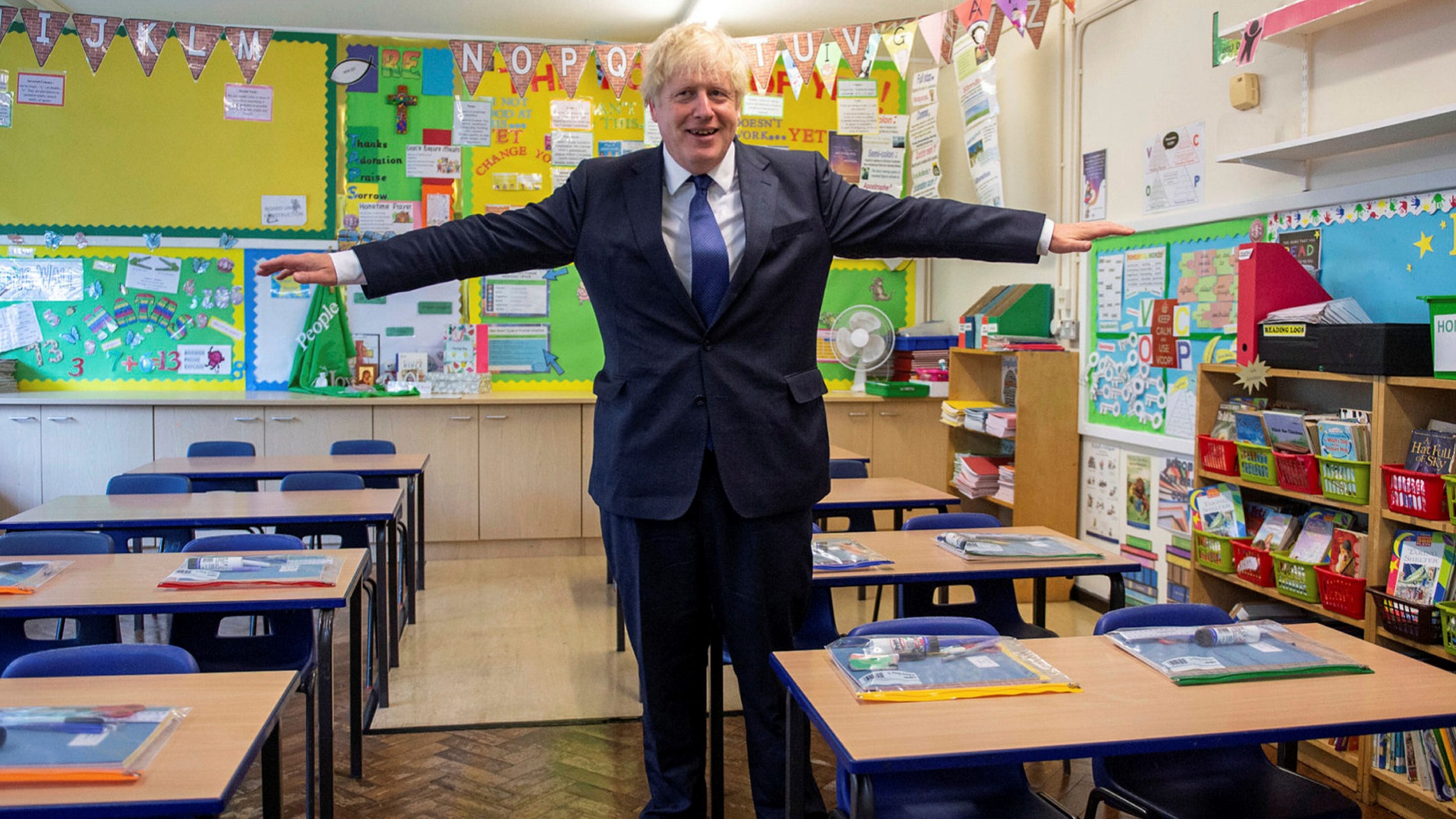
Pressure has been increasing on the Prime Minister to tell children and their families when schools can reopen after officials at Public Health England (PHE) decided it would be safe to open primaries after February half term. The Times has more.
Primary schools can safely reopen after half-term if cases keep falling, government health advisers have concluded.
Public Health England (PHE) said that there was now a “strong case” for the return to class, adding more pressure on Boris Johnson to set out a timetable for primary schools to reopen.
Pupils in that age group are “resistant” to wider coronavirus trends and play a small role in spreading infection, a series of comprehensive studies has concluded.
Outbreaks were recorded in 3% of primary schools during the autumn term, with most cases among teachers rather than pupils, PHE found. “Everything we have learnt from the summer half-term and the recent autumn term indicates that they are safe to remain open,” Shamez Ladhani, its Chief Schools Investigator, said. Secondary schools were five times as likely to record outbreaks and much more closely reflect wider infection patterns, suggesting that a later, more phased opening might be necessary.
Mr Johnson promised yesterday to give a further indication on reopening schools “as soon as we can”. Several Tory MPs demanded clear plans for a return before Easter and Labour called for a guarantee that schools would be the first priority for lockdown easing.
Leading paediatricians warn in a letter to the Times today of the “calamitous” impact of closures and say that “anxiety, depression, self-harm and suicidal thoughts are at frightening levels”.
Pressure from backbench MPs, some of whom have endorsed the UsForThem campaign, is mounting, the Sun reports.
Boris Johnson must begin getting children back into classrooms next month, his own MPs and parents demanded last night.
The PM was warned that a swift return was vital to avoid risking “a lost generation” of kids from the country’s poorest families.
The calls came after Health Secretary Matt Hancock hinted teachers will be vaccinated as a priority – but not before Easter.
Tory MPs and parents warned Boris Johnson last night that children risk becoming the “forgotten victims” of the Covid pandemic.
Former Cabinet Minister Esther McVey said “We genuinely seem to have forgotten about schoolchildren.
“They are the pandemic’s forgotten victims. We’ve got to start thinking about their prospects and futures.”
She added: “It’s time to get schools open, to safeguard children’s futures and to make sure we don’t let down an entire generation.”
More MPs spoke out about the ongoing and future harms:
The Essex MP [Robert Halfon] told the Sun: “Long after the coronavirus has gone, our younger children could be mired in a ditch of educational poverty, mental health crises and safeguarding hazards because of the damage of school closures.”
Mansfield MP Ben Bradley said: “Schools must reopen. Each day they’re out of the classroom, the most disadvantaged children are falling behind in their education, and their life chances are poorer as a result.”
Mark Harper, head of the Covid Recovery Group of Tory MPs, said: “As the PM himself said last August, ‘Keeping our schools closed a moment longer than absolutely necessary is socially intolerable, economically unsustainable and morally indefensible.’”
The Telegraph also urged the Government to set out a timetable for schools reopening.
It is evident that the Government has no more idea when all children might return than anyone else. It is unclear what the official metric is for ending the lockdown and allowing schools to resume normal teaching. Is it the infection rate among teachers who, as Office for National Statistics figures showed yesterday, are no more at risk from Covid than many other walks of life? Is it the propensity of children to pass the virus on to older family members? If that is the case, that risk will persist because children are not to be vaccinated, certainly not for months, if at all. Moreover, if children are passing on the virus within their own families then vaccinating teachers will make little difference to the spread of Covid though it might help create the conditions to reopen schools.
Or is the date for reducing restrictions the point at which the most vulnerable have been vaccinated? This is expected to be mid-February, by which time 13 million vaccines should have been administered to the elderly and sick. Yet doubt is now being cast over this because it is not certain that the vaccine will give sufficient protection. Another metric is pressure on the NHS. Even if infection rates remain high, will controls be eased once it is evident that the vaccine has helped reduce hospitalisations?
We know none of the answers to these questions and Boris Johnson was unable to shed any light when asked yesterday to give an idea when the lockdown might be eased.
Stop Press: Ross Clark reports in the Spectator that the European Centre for Disease Prevention and Control has not found a conclusive link between schools and the winter resurgence.
Schools were the last institutions to close and can be expected to be the first to reopen. But just how big a part do schools play in the spread of COVID-19? The European Centre for Disease Prevention and Control has published a review of the evidence from 17 countries and concluded that the reopening of schools cannot be blamed for a resurgence in the virus.
Most countries closed their schools during the first wave of the epidemic in spring 2020. From April 15th, Denmark reopened schools – with social distancing – for two to 12 year olds. There was no increase in cases following this reopening, according to the ECDC. Similarly, South Korea’s phased reopening of schools between April and June was not found to be associated with any sudden rise in paediatric cases.
Worth reading in full.
Stop Press 2: The Daily Mail has reported on a survey by the Office for National Statistics (ONS) showing that, amid much hand-wringing about the safety of teachers, they are far from the highest risk occupation.
Binmen, male lorry drivers and carers are among the groups most at risk of contracting coronavirus, official figures from the Office for National Statistics have revealed.
The report published today found that men in ‘elementary occupations’, including binmen, postmen, cleaners and security staff, had the highest number of deaths from the virus last year, with 699 deaths in this category – a rate of 66.3 deaths per 100,000 people.
They were followed by lorry and bus drivers and others working in transport, where 608 fatalities were recorded.
The report found 139 teachers in primary schools, secondary schools and universities in England and Wales died last year after catching the virus.
Protecting teachers earlier than other vulnerable Brits has been a subject of hot debate in recent weeks with ministers desperate to reopen schools, but the data showed their death risk was no higher than average.

Lorry drivers and binmen faring worse than doctors, nurses, and care workers points towards more complex risk factors than just the sheer amount of human contact (lorry drivers in particular, experience practically none in their day-to-day work).
Stop Press 3: A schoolgirl in Keswick, Cumbria has been spotted in the town square staging a reverse Greta Thunberg-style protest:

Does Charging Travellers for Enforced Hotel Stays Violate WHO Rules?
As the country awaits news later today of the final decision on Australia-style quarantine hotels in the UK, the policy seems likely to go ahead in some form, with the majority of the cabinet in favour of it. However, a reader has been perusing the WHO’s International Health Regulations and thinks that the policy might technically be against the rules if travellers are made to pay for their incarceration.
There have been numerous news reports that the UK may announce mandatory hotel-based isolation for international arrivals and that travellers will have to pay the cost. This would violate the UK’s international obligations, which the WHO describes as a legally binding.
The UK is party to international obligations by virture of its membership in the World Health Organisation and I have heard members of Government say that travellers would be required to pay for the cost of their isolation. This would breach these obligations.
Article 32 of the Regulations requires the state to provide or arrange for adequate food, water and accommodation for travellers who are quarantined or isolated for public health purposes. Article 40 prohibits the state charging for such provision.
There is a limited exclusion from prohibition on charging for persons arriving in the UK to take up temporary or permanent residence. This exclusion would not apply to visitors to the UK nor to UK residents returning to the UK.
WHO International Health Regulations:
Article 32: Treatment of travellers
In implementing health measures under these Regulations, States Parties shall treat travellers with respect for their dignity, human rights and fundamental freedoms and minimize any discomfort or distress associated with such measures, including by:
(a) treating all travellers with courtesy and respect;
(b) taking into consideration the gender, sociocultural, ethnic or religious concerns of travellers; and
(c) providing or arranging for adequate food and water, appropriate accommodation and clothing, protection for baggage and other possessions, appropriate medical treatment, means of necessary communication if possible in a language that they can understand and other appropriate assistance for travellers who are quarantined, isolated or subject to medical examinations or other procedures for public health purposes.
Article 40: Charges for health measures regarding travellers
1. Except for travellers seeking temporary or permanent residence, and subject to paragraph 2 of this Article,** no charge shall be made by a State Party pursuant to these Regulations for the following measures for the protection of public health:
(a) any medical examination provided for in these Regulations, or any supplementary examination which may be required by that State Party to ascertain the health status of the traveller examined;
(b) any vaccination or other prophylaxis provided to a traveller on arrival that is not a published requirement or is a requirement published less than 10 days prior to provision of the vaccination or other prophylaxis;
(c) appropriate isolation or quarantine requirements of travellers;
(d) any certificate issued to the traveller specifying the measures applied and the date of application; or
(e) any health measures applied to baggage accompanying the traveller.
** Para 2 allows charging for medical services that are primarily for the benefit of the individual and not for public health reasons. It would not allow charging for isolation.
On the face of it, our contributor seems to have raised a problem the Government appears to be unaware of. But if there are any readers with the relevant legal expertise who think this is too good to be true, please let us know.
Stop Press: The Times reports that even if the policy is given the green light tomorrow, it could take three weeks for the many currently dormant hotels to become fully operational again, particularly with the extra staff and procedures they’ll need to put in place.
Boris Johnson is tomorrow expected to sign off plans to quarantine all travellers at a meeting of the Government’s coronavirus operations committee in an effort to stop the import of variants from abroad.
The Prime Minister said he wanted “maximum possible protection against reinfection from abroad” to prevent new variants from jeopardising the mass vaccination programme.
However, a hotel industry source told the Times that as many as a quarter of the 30-plus hotels around Heathrow were shut at present because of the collapse in passenger demand at Britain’s biggest airport. Some of the remaining hotels have undergone partial closures.
The number of travellers passing through Heathrow was down by 83% last month compared with a year ago.
The source said that it could take two or three weeks to reopen closed hotels – if they were needed – while vital safety procedures were carried out. This includes checks on the water supply to make sure it is free of potentially deadly bacteria and training staff in the latest COVID-19 compliance procedures.
The Price Some Families Will Pay if Britain Imprisons Travellers in ‘Quarantine Hotels’

We are publishing an original article today by Kathrine Jebsen Moore, a freelance writer in Edinburgh. She regularly contributes to Quillette, where she covered the culture wars in the knitting community, and has also written for the Spectator, spiked and New Discourses. It takes the form of a letter written to the Home Secretary, Priti Patel, lamenting the move towards pulling up the drawbridge, and the consequences for her international family:
Dear Priti Patel,
I sympathise with your idea of looking to Australia and New Zealand for inspiration. They have managed to practically eliminate the virus by shutting themselves off from the rest of the world, only allowing natives to return, and when they do, imprisoning them in ‘quarantine hotels’. Britain looks set to achieve, finally, a pandemic success, rolling out the vaccine faster than any other European country. This is of course good news. For most Britons, pulling up the drawbridge is surely a logical next step as life gradually returns to normal. After all, holidays are all but illegal at the moment, so why shouldn’t those who do wish to return from abroad, or indeed venture here, be faced with an extra barrier? The number of visitors is currently around 10,000 a day and it’s hoped that the threat of an enforced quarantine in cheap hotels will get the numbers down. All arrivals are currently expected to quarantine, but with no real way of ensuring that everyone does. That means the risk of new strains of coronavirus arriving with them is still real.
But have a thought for those of us with families divided between different countries. This news feels like yet another blow to our plans to being able to see our family overseas this year. To explain: I arrived in the UK more than 20 years ago as a student. I’m from Norway, which is only a short flight across the North Sea. I’ve settled with my English husband in Scotland, and travelling to Oslo from here is just 20 minutes longer on a plane than flying to London. Pre-pandemic, all our holidays were spent in Norway. We own a house there, in a little town on the Oslo Fjord coast, where our four children have friends, see family, and immerse themselves in Norwegian life. This means skiing in the winter, and swimming and enjoying the warm weather in the summer. My parents have been very grateful that, despite us living abroad, they have seen their grandchildren almost as much as other grandparents whose children reside in the same country.
Worth reading in full.
Antibody Levels May Show Swedish Herd Immunity
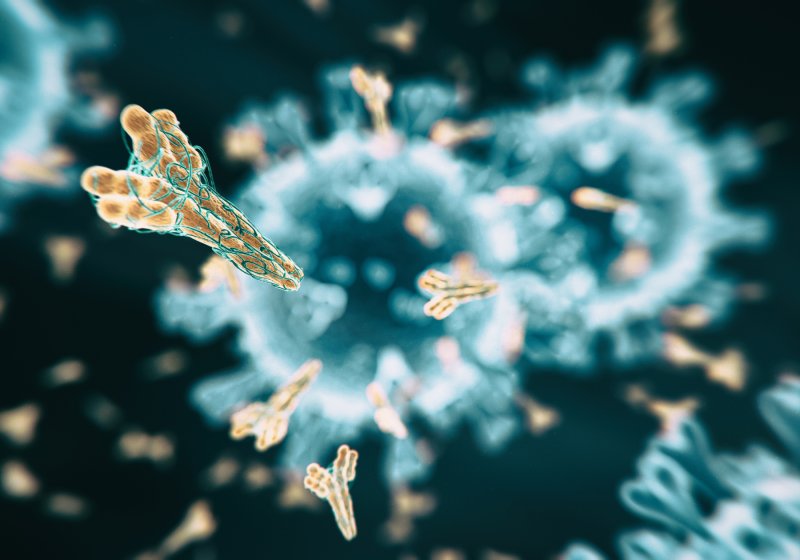
Following on from our headline article by Will Jones a couple of days ago about Sweden’s deaths being in line with the European average, the Swedish doctor Sebastian Rushworth MD has published a piece on his site drawing attention to a graph showing the proportion of Swedes with antibodies. He concludes that it shows further evidence that Sweden’s much less draconian strategy was a success.
Here’s a graph that doesn’t get shown in the mass media, and that I’m sure all those who want you to stay fearful of Covid don’t want you to see. It shows the share of the tested population with antibodies to Covid in Sweden week by week, beginning in the 28th week of 2020 (the first week for which the Swedish Public Health Authority provides data on the share of tests coming back positive).
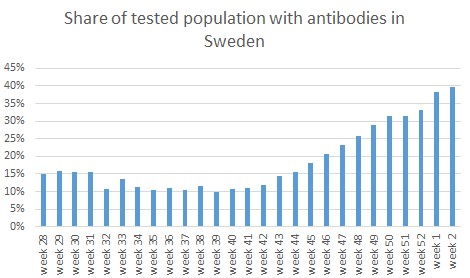
There is so much that is interesting about this graph. Like I said, it begins in Week 28, in other words in early July, which is around the time the first Swedish Covid wave was bottoming out. At the time, I personally thought this was due to enough of the population having developed immunity to covid, but we now know that was wrong. Rather, it was due to seasonality – in other words, summer caused covid to disappear.
The proportion testing positive for antibodies was 15% in early July. It remained stable for a few weeks, and then started to drop, as we would expect, given that the rate of new infections was very low at the time. Your body generally doesn’t keep producing antibodies forever after an infection, rather they wane. Of course, this doesn’t mean immunity is waning, as I discussed on this blog a while back. Although the actively antibody producing cells disappear, memory cells remain, ready to be activated at short notice if you get re-exposed to the pathogen.
After an initial reduction, the proportion with antibodies stabilized at around 10% in August, and stayed that way until October, when it started to rise, in line with the beginning of the second wave. And it’s literally kept rising by a percentage point or two, every week, all autumn and winter so far. In the second week of January 2021, 40% of those tested in Sweden had antibodies to Covid.
Funnily enough, mainstream media has so far shown relatively little interest in publicizing this astounding fact. I’ve been getting most of my statistics from SVT, the Swedish public broadcaster. They had been providing data on the share with antibodies in Stockholm up to a month or two back, when that information discretely disappeared from their website. I wonder why.
Worth reading in full.
Stop Press: A reader has drawn our attention to a Swedish report on care home deaths in Stockholm, which Dr Rushworth also links to later on in his article. The original Swedish report is here, and our reader has kindly translated and summarised the findings:
A report from care homes in Stockholm with Covid deaths: only 17% died of Covid (dominating cause of death); for 75%, Covid could have been a contributory factor; and for 8% , there was another cause of death entirely. This is the same percentages found in a study of care homes in another part of Sweden published in 2020.
The interesting thing is the description of these three categories describing the types of frail patients in the group. It is highly likely that only the first group were Covid deaths.
The first group (17%), where Covid was the dominating cause of death, had the following features: before getting Covid they were in a stable condition and had few underlying diseases. The actual Covid disease was more often in two phases and the second phase was characterised by high fever and poor oxygen saturation.
In the second group (75%), where Covid was a contributory factor, the individuals where already sickly and frail. The time between the onset of symptoms and death was short, but without dramatic signs.
In the third group (8%), where there was another cause of death, the individuals had already caught Covid and recovered and then got another disease. They had a longer time between the recording of Covid infection and time of death.
Stop Press 2: Ross Clark’s short summary in the Spectator of a new study of how long immunity lasts after infection is also worth a read.
Covid Riots in the Netherlands

The Netherlands adopted a relatively light-touch approach to restrictions last year, and enjoyed a relatively normal summer, but ramped up restrictions last October. In recent days, violent riots have broken out, with protestors objecting to a new curfew law. The Times has more.
Police have warned that the Netherlands could face weeks of rioting after a coronavirus curfew ended in the worst riots for 40 years as delays to vaccinations raised tensions across Europe.
There were over 240 arrests last night as police used tear gas and water cannon to break up demonstrations in Amsterdam and Eindhoven leading to rioting across the country.
Mark Rutte, the Dutch Prime Minister, blamed the “criminal violence”, which “has nothing to do with fighting for freedom”, on a “one per cent” minority opposed to lockdown restrictions.
“We are fighting against the virus to regain freedom,” he said. “We are not taking these measures for fun. It is the virus that is depriving us of our freedom.”
The caretaker Prime Minister singled out attacks on a virus testing centre and a hospital for particular criticism after a weekend of violence following the curfew’s introduction on Saturday night.
“It is intolerable. Any normal person can only become aware of this with horror. What has got into these people?” he said to the NOS public broadcaster. “This has nothing to do with protest, this is criminal violence and we will treat it as such.”
Frustration at the curfew, from 9pm to 4.30am and the first such restriction since Nazi occupation, has flared because Dutch infections are down and the country’s vaccination rate is low.
Dutch vaccinations are at some 0.8% compared to an EU average of twice that, while the UK has passed 10%, holding the prospect of a prolonged lockdown.
John Jorritsma, the mayor of Eindhoven, warned the Netherlands could be “on the road to civil war” after what he described as enormous damage in his city.
“This was not a demonstration. This was excessive violence, boredom, idleness. Hooligans came from all over the country, meeting on social media,” he said. “You see that the riots in Eindhoven were imitated in other municipalities. If you set the country on fire in such a way, it looks like we are heading for civil war.”
Police are worried that the violence will continue for “days or weeks” after violence in Eindhoven and Amsterdam spread to other cities including the Hague, Tilburg, Venlo, Helmond, Breda, Arnhem and Apeldoorn.
“It was terrible,” said Hubert Bruls, the Chairman of the National Security Council of Cities and Regions. “This is not a demonstration, I would call this corona hooliganism.”
Rioting broke out on the curfew’s first night, with almost 3,000 fines of €95 and violence in the fishing town of Urk on Saturday where a street testing centre for coronavirus was set on fire.
Koen Simmers, the head of the Dutch police union, said it was the worst rioting since since the squatter protests of 1980 and predicted that the violence was here to stay. “I hope it was a one-off, but I’m afraid it is the harbinger for the coming days and weeks,” he said. “We haven’t seen so much violence in 40 years.”
Worth reading in full.
Any readers in the Netherlands witnessing what is happening on the ground are invited to email us and give us their accounts.
Stop Press: Watch footage of the Dutch riot police abusing protestors.
HART: Health Advisory and Recovery Team

A new group of experts has been set up with the intention of raising the level of debate about lockdowns. They aren’t all lockdown sceptics, but they aim to put the existing measures in proportion and challenge some of the more extreme justifications for the current lockdown. Among their number are a few familiar faces such as Dr John Lee, Prof David Livermore, Joel Smalley, Dr Jonathan Engler, Dr Malcolm Kendrick, Prof David Patton and Prof Gordon Hughes. Their mission statement reads as follows:
HART is a group of highly qualified UK doctors, scientists, economists, psychologists and other academic experts.
Our core aim is to find the common ground between the Government and groups that are concerned about COVID-19 restrictions. The ambition is to bring all sides together and to widen the debate in order to formulate an exit strategy that benefits everyone in society.
Our research has identified a need for public policy to reflect a broader and more balanced approach across a number of key areas, in particular:
– Impact of restrictions across the whole of the healthcare system and on wider society;
– Cost vs benefit of school, college and university closures;
– The mental health impact of the restrictive measures;
– Mass-testing procedures and associated data analysis;
– A full assessment of the psychological impact, on individuals and wider society, of COVID-19 communication policies;
– Safe and effective treatment and prevention/prophylaxis options, in addition to vaccination, to increase survival rates.
Consultations from HART will be founded on scientific, evidence-based principles in the interests of public health. We want to encourage clear, calm and compassionate discussions.
Our experts take a collaborative approach and invite contributions from all sectors and interested groups or communities, at all levels.
HART is a not-for-profit, unincorporated membership association and its consulting members collaborate on an entirely voluntary basis.
The group could be considered an alternative to Independent Sage – a sensible, non-partisan version.
We wish them the best of luck. You can find their site here.
Is Lockdown Scepticism Rational?

What follows is a guest post from a senior scientist.
I was reading Lockdown Sceptics today and how the rhetoric about us sceptics is being ramped up, it really got me questioning whether I am rational. What if they’re right? So I thought I’d write down my own personal reasons as to why I am a lockdown sceptic. I thought I’d share these with you just to check I’m not mad!
There are many reasons and rationales to be sceptical of lockdown as an approach. My own ones grew out of the fact that my working career as a scientist has been mainly spent in drug R&D and, so, I naturally view non-pharmaceutical interventions (NPIs), such as lockdown, from this point of view. As a result, after the first lockdown, I found myself asking a very simple question: ‘is lockdown good medicine?’
My own answer to this question is ‘no’, but this answer is not a fantastical one based on denying the existence of COVID-19 or any other such nonsense. It is a logical and entirely rational position which I will explain below. It is based on evidence and a bunch of assumptions, most of which are I believe are to a large extent uncontentious.
These uncontentious assumptions are:
1. COVID-19 is a serious new human disease, caused by the coronavirus SARS-CoV-2, that can kill people. The disease ‘jumped species’ in Wuhan Province, China and spread globally from there.
2. Doing nothing in the face of this new disease and the resulting pandemic was not an option because, despite some pre-existing immunity to the disease, in the UK a large proportion of the population was naïve to the infection and as a result even a modest infection fatality rate could have resulted in a significant number of deaths.
3. COVID-19 hits older and more vulnerable individuals harder than younger, fitter individuals. As a result, the majority of deaths and serious illness are in the older, sicker population. This doesn’t mean that some younger or otherwise apparently healthy people can’t die or have significant illness, it is just a lot less common in this group.
4. Our responses to COVID-19 breaks into three areas – a) treatments, b) vaccines c) non-pharmaceutical interventions (NPIs).
5. NPIs, including severe blanket societal restrictions such as lockdowns, aim to limit the spread of coronavirus by breaking chains of infection within the population. NPIs were deployed to help tackle the pandemic with the aim of reducing the burden of disease to healthcare systems and buying time to develop 4a and 4b. As such, as we develop new treatments and vaccines the need for NPIs should reduce.
6. NPIs require behavioural changes within the population and therefore always have consequences.
7. NPIs vary in the severity of these consequences to individuals and society as a whole: at one end of the spectrum are things such as hand washing, in the middle things like banning large gatherings of people and at the other end, forcing individuals to stay home and closing schools and businesses (lockdowns).
8. National deployment of NPIs affects almost everyone in society regardless of age. Some NPIs affect younger people more than older people e.g. closing schools and universities.
9. More severe NPIs can cause damage to both mental and physical health and wellbeing (including deaths). They also produce proportionally greater economic damage. These harms can be, and will be, significant and long-lasting.
There is only one other additional assumption, and this is where my scepticism about lockdowns comes from:
10. There is only weak evidence to support the notion that more severe restrictions result in proportionally more effective disease control. This contention is based on the fact that there are many published papers suggesting little or no relationship between more stringent forms of NPIs (such as lockdowns) and better outcomes. A summary of some published papers can be found here.
I believe that this is probably a classic case of the law of diminishing returns, where more severe restrictions produce little additional benefit over less severe ones and so come with a disproportionally high cost, both to the economy and to the individual and society.
So, if you take onboard 8 and 9 and accept that 10 is to some extent true, then you have to be sceptical of lockdown as an effective intervention because you have to doubt that any gains from imposing more severe NPIs outweigh the harms and negative consequences they cause.
Note: this doesn’t mean that there are no benefits, just that they are marginal gains over less severe restrictions and come with huge costs and risks. In addition, from assumptions 3 and 8 we can further argue that by ignoring the demographics of the disease we don’t focus NPIs on those most likely to benefit from them and, in fact, we impose them on individuals who are very unlikely to benefit. Logically, if you accept assumption 10 to any degree, you are led to the conclusion that the harms and costs of lockdowns outstrip their benefits and that lockdowns are not a viable NPI with which to effectively manage COVID-19 (or any other similar infection). They are bad “medicine”.
Informed Consent: A Former NHS Consultant Writes….

Dr Gary Sidley, a former NHS Consultant Clinical Psychologist (and a member of HART), has drawn our attention to a piece he has published on his blog, posing a series of questions about the vaccine that should be considered before making an informed decision on the matter. Here is an excerpt:
In December 2020, accompanied by expressions of unbridled elation from politicians and the mainstream media, the UK began the roll out of a COVID-19 vaccine. This milestone closely followed the announcements of the initial results from three of the front-running drug companies in the vaccine race, Pfizer-BioNTech, Moderna and Oxford-AstraZenica, all reporting high levels of efficacy for their new vaccine. The Government’s intention is to offer the jab to the large majority of the UK population, starting with the most vulnerable groups – the elderly and those with underlying health problems.
But is it in everyone’s interest to take the vaccine when the opportunity arises?
Within a civilised society each of us retains the fundamental right to decide whether or not to accept a medical intervention, including the offer of a drug or vaccine. In order for an individual to make an educated and rational judgement, all relevant information – about both the likely benefits and disadvantages of the medicinal chemical – should be made available to the potential recipient. Only by careful consideration of this range of information can a person give ‘informed consent’ to accept the treatment. So with regards to the COVID-19 vaccines, what are the need-to-know facts?
It makes sense for each of us to assess the risks and benefits of accepting the vaccine, taking into account age and current health status. To aid this process, here are five questions to ask when deciding whether to say yay or nay, followed by my attempt to offer the relevant information.
1. If I become infected with SARS-COV-2 virus, what is the actual risk of becoming ill, or dying?
If you contract the SARS-COV-2 virus, there is about a 1-in-5 chance that you will suffer significant COVID-19 symptoms, the large majority of those testing positive showing either no or very mild signs of illness. Considering all age groups together, around 1-in-100 infected people will require hospital treatment and 1-in-750 will require intensive care. For older people (>70 years), the average risk of hospitalisation may be as high as 1-in-20.
Overall, the Infection Fatality Rate (IFR) of SARS-COV-2 is in the range 0.15 to 0.2%; in other words, for every 1,000 people who contract this virus no more than two people will die. The mortality risk is largely determined by age, the threat growing steadily with advancing years. The average age of those dying is 82 (slightly above normal life expectancy). The IFR for people below the age of 70 is between 0.03 and 0.04%; for every 10,000 people infected, 3 to 4 will die. About 95% of fatalities will have had serious underlying conditions.
For healthy people under the age of 35 the additional fatality risk of contracting SARS-COV-2 is almost zero. Meanwhile, children are as good as bullet proof, with seasonal influenza presenting a much greater risk of mortality to under-15-year-olds.
A useful rule of thumb for understanding age-related risk levels is to remember that contracting SARS-COV-2 virus is like packing a full year’s worth of death risk into a four-week period. Thus, on a child’s 10th birthday the chances of that child not reaching their 11th birthday is vanishingly small; this tiny probability is roughly equivalent to the risk of this 10-year-old dying from a SARS-COV-2 infection. In contrast, an 85-year-old person will typically have a 10% chance of not surviving until their next birthday, and around a 10% risk of dying within four weeks should they contract the virus.
In summary: For healthy people under 50, the risk of serious harm from SARS-COV-2 is vanishingly small, with other threats (for example, cancer and accidents) presenting a greater risk. The risk of the virus for old people is many-fold greater, but even a reasonably-healthy-90-year-old will have over 90% chance of survival.
Worth reading in full.
Stop Press: Unexpected news out of Germany as Der Spiegel reports that Government sources are finding that the AstraZeneca vaccine is only proving 8% effective in the very elderly group which it’s supposed to benefit the most. (Translated from German):
The corona vaccine from the manufacturer AstraZeneca apparently has little effectiveness in older people. As the Handelsblatt reports, citing Government circles, the vaccine is only expected to be effective at 8% in those over 65 years of age. AstraZeneca rejected the reports as “completely inaccurate”, according to Reuters news agency.
The Bild newspaper, however, also citing Government circles, reports that the vaccine should only receive approval from the European Medicines Agency (EMA) for people under 65 years of age.
According to the Handelsblatt report, the Federal Ministry of Health is already checking whether the sequence of vaccinations, which is staggered according to age, needs to be adjusted. A statement by the ministry on the possible consequences of the low effectiveness on the Government’s vaccination plan is not available, according to Handelsblatt.
A final result on the effectiveness of the AstraZeneca vaccine is not yet possible, according to the newspaper. In the clinical studies of the pharmaceutical company, older people were apparently relatively poorly represented. The British approval authority MHRA had already noted that meaningful results on the effectiveness of the vaccine could not be determined in these studies.
AstraZeneca is already under pressure because it apparently cannot meet the contractually agreed delivery quantities of the vaccine to the EU. The British-Swedish group announced on Friday that after the approval of its vaccine – which is due to take place this week – it will only deliver 31 million doses instead of 80 million by the end of March.
UPDATE: It’s being reported that the German health ministry has said the 8% figure instead refers to the proportion of 56 to 69-year-olds in the vaccine trials. In a statement, the ministry said: “At first glance it seems that the reports have mixed up two things: about 8% of those tested in the AstraZeneca efficacy study were between 56 and 69… But one cannot deduce an efficacy of only 8% with older people from that.”
Another Patient ‘Disappears Into The System’
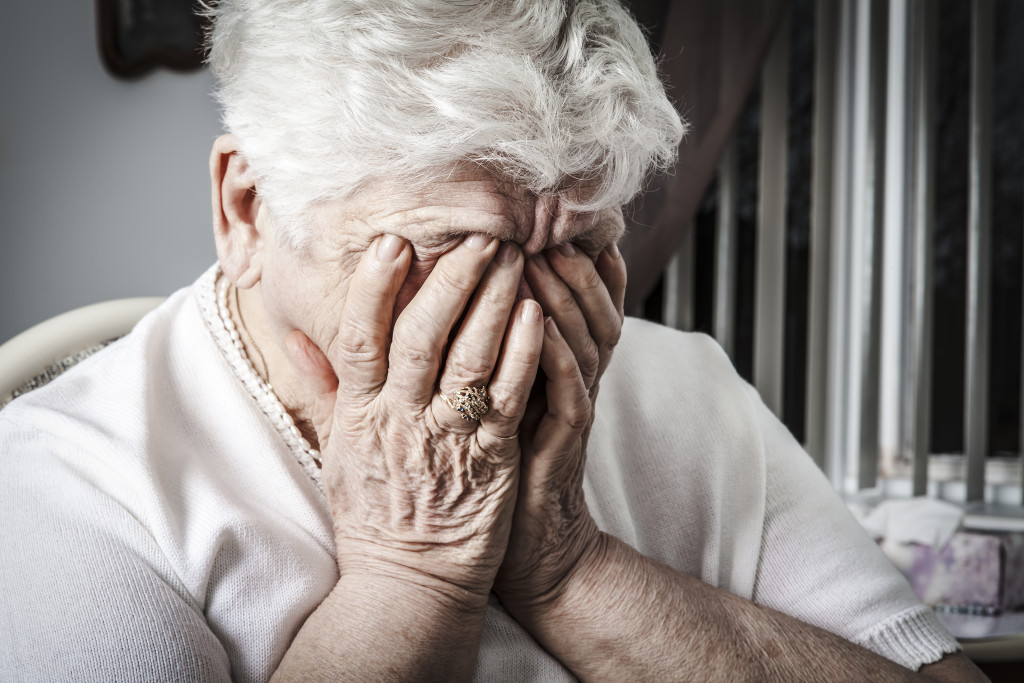
After reading the story of a stressful breakdown in communications between a reader and the hospital where his seriously ill mother was being treated that we published yesterday, another reader has got in touch with a similar account.
I have had the same experience as your reader. At the end of December, my 90 year-old sister was taken into hospital with a chest infection. It was extremely difficult to find out how she was or where she was. I too found calls not answered, calls forwarded to wards cut off, or again not answered at all, and numbers for direct lines to wards that were posted on the hospital website no longer in use. But the situation became worse when she recovered and was due to be discharged. As a routine, she was tested for Covid and was found to be positive – a hospital-acquired infection.
The family expected to be kept informed and did not wish to distract busy ward staff, but when after three days we had heard nothing I rang the hospital. It took me two hours to find out where she was, but I was pleased, if surprised, to find they were trying to discharge her, possibly that day. That was a Thursday. We were promised an update. Having heard nothing, the following Monday I rang again and was told by the ward clerk that she was alert and chatty and taking her medicine. When I asked whether she had developed Covid symptoms the ward clerk couldn’t tell me. On Thursday I was again told she was to be discharged when they had heard that her care home was happy to take her back. A hospital social worker later rang me to say that all was well and she would be going back to her care home on Saturday, in two days’ time. On Monday I rang the ward again, to be told, again, that they wanted to discharge her but were waiting to hear from the care home. I rang the care home. Staff there said they were waiting to hear from the hospital. The care home then rang the hospital and I discovered the next day that they, the care home, had managed to get her back.
Three things to note:
– I can confirm that patients do indeed disappear into the system. This was distressing, but my sister is a frail 90-year-old and we have come to terms with the fact that she might not be with us much longer. Imagine, though, if that was your husband or wife, son or daughter, that the ambulance had whisked away.
– Covid was acquired in hospital. Or was it? It was never clear to us whether she actually had Covid or not. What does this mean for official infection statistics?
– The discharge procedure was completely chaotic. This meant my sister was in hospital for five days, possibly even 12 days, longer than necessary. I do not need to point out the extra pressures and increased danger of infection caused by this incompetence.
This too was in Norfolk – the Norfolk and Norwich University Hospital, where my sister was herself a nurse for many years. Almost, but not quite, without exception, the many staff I spoke to were doing their very best to be as helpful as possible, and it’s true that hospitals have been under enormous pressure in the last month. However, when my sister was previously hospitalised, in August last year, it was almost as difficult to get information. For instance, every phone call to the switchboard was answered with an interminable message about visiting arrangements.
It does seem to be the usual story of a cumbersome and inadequate bureaucracy and extremely poor communication systems working together to make the jobs of the frontline staff and the lives of concerned families as difficult and stressful as possible.
Sceptics Under Fire

We’ve continued to receive responses regarding the “Antivirus: The COVID-19 FAQ” website from readers.
One points out more double standards:
One of your readers very helpfully listed some of the errors made by the WHO, making the point that the Anti-Virus site applies an extraordinary double-standard when attacking the credibility of lockdown sceptics. It is not only the WHO that has escaped the notice of O’Brien et al.
The Q&A section on that site says:
Q. Why are you singling out specific individuals? Do you have some kind of grudge against them?
A. A few people, for whatever reason, have consistently made false claims and bad predictions throughout the Covid pandemic, and have refused to admit when they’ve got it wrong. Some of these people have been very prominent and influential during the pandemic. We try to use their own words to show that many of them are not reliable people to listen to.
But of course they haven’t named and shamed the most consistently false prophets in the debate. Were that the case, Neil Ferguson, Patrick Vallance, Chris Whitty, Anthony Fauci and many more would be included. Had the same standard (or even a lesser standard) been applied to advocates for authoritarian measures, those held up as “The Science” would be more deserving of the attentions of the fact-checkers on the site than the sceptics.
Far from being denounced for their authors’ inaccurate predictions, we see modelling studies by Imperial College presented as evidence against the lockdown sceptics, and described as one of a handful of “high-quality studies” showing that lockdowns “do save lives”. Incidentally, the studies referred to also include an analysis in Nature, but Anti-Virus makes no mention of the fact that that analysis found that “less disruptive and costly NPIs can be as effective as more intrusive, drastic, ones (for example, a national lockdown)”.
We also received a more lengthy critique, taking each of the site’s claims in turn:
It has become noticeable in recent times (since the invention of social media?) that resolving contentious issues has become more about ‘winning’ the argument than about finding the best solution to a real-world problem. The Anti-Virus website is certainly in the former genre, being more about rubbishing the views of a perceived opponent than seriously engaging in discussion of the issues.
Four argument techniques are primarily used by Anti-Virus:
– Straw Man (present opponent’s arguments escalated to absurdity)
– Rubbish opponent’s reputations rather than their arguments
– Categorise opponents with established ‘negative’ words
– Avoid considered debate of the issues when space/time is limited and just go for ‘knockabout’ denigration
Effects of Covid-19
Claim 1: “99.5% survive Covid – we’re overreacting”
Response: A statistical argument which depends on what data you select, its level of supposed accuracy and how you manipulate it. The whole Covid episode shows that opposing points of view (often honestly held) are often based on different ‘facts’. Pointless pursuing as there is no resolution in the discussion time frame as to which (if any) data is ‘true’.
Claim 2: “It’s only as deadly as the flu”
Response: More statistical manipulation! Regardless, the only issue for lockdown sceptics (note, NOT ‘covid sceptics’) is selecting a response to whatever threat level presents itself. This is entirely a matter of human judgement which can never be proved right or wrong as you can never re-run history to explore the alternatives.
Claim 3: “91% of Covid ‘cases’ are false positives”
Response: You can argue for ever on the actual figures. In the military, the key to a successful operation is correctly identifying your objective. The issue (which space here does not allow for development) is whether reducing ‘case’ numbers is a sensible objective. Clearly limiting hospitalisations and ‘excess’ deaths is a sensible objective, but the link to ‘cases’ in general is highly contentious.
Claim 4: “There are no excess deaths”
Response: More statistics! A reasonable participant in the argument would accept that even your opponents would prefer to see no excess deaths. If they are inevitable, calculating any changes are dependent on factors such as the definition of an ‘excess’ death, over what period should you measure it and what would have been the life expectancy for different categories of excess death. In the real world, all these factors are so ambiguous, and the excess death variance between the two positions so relatively small, that it is not an issue to spend too much time on.
Claim 5: “People are dying ‘with’ Covid but not ‘of’ Covid”
Response: Again, this is aimed at a non-existent opponent. Lockdown sceptics are certain there are many deaths ‘by, with or from’ Covid but where they fall in the death league table and how accurately they are classified is not going to have much effect on shaping pandemic policy.
Lockdown Scepticism
Claim 6: “Lockdowns cause more deaths than they prevent”
Response: A good example of Straw Man attack. Raises two issues, both of which cannot be answered with any certainty, but should be considered in a balanced discussion. Firstly, would there have been more or less deaths using a different strategy to lockdown? Cannot be answered unless you have a means of running history twice. You end up falling back on modelling and probabilities which a cynic would say are pseudonyms for guesswork.
Secondly, will the excess deaths caused by delays to non-Covid medical treatment exceed those of Covid? Cannot be answered for several years when its only value would be in shaping response to future pandemics. This is perhaps where all the investigation should be concentrated as we are clearly not going to change course this time round.
Claim 7: “Cases were falling anyway – lockdowns don’t work”
Response: Another Straw Man! Cases have been constantly going up and down throughout the last 11 months with innumerable analysts (journalists, academics, Government ministers) claiming correlation for their preferred factor(s). Correlation is not causation so innumerable mechanisms are cited to explain the connections. Factors that do not fit the required relationship are dismissed as irrelevant. Such is the world we live in, but it is wise to take it all with a pinch of salt, particularly when you consider that even trained statisticians must consider their future employment.
All that can really be said is that no strategy has yet been demonstrated that enables humanity to control/eliminate the endemic virus that Covid has become. The specific examples of smallpox and a few other rare viruses seem unlikely to change that situation in any relevant timescale. What we can do is consider whether our level of self-imposed harm (which is real and measurable) is likely to be worse than the rather speculative guesswork on the nation’s future health. The handling of regular pandemics since WW2 would suggest that our unique experiment is going to be quietly overtaken by time-honoured resolution although it is unlikely that any of the actors will admit to that.
Claim 8: “The Great Barrington Declaration gives a good alternative to lockdown”
Response: Lots of Straw Men here! The Declaration has been expanded in a condemnatory manner to include numerous imagined scenarios which lead to hopeless outcomes. A year ago, proposing what we have done with Lockdown would have been condemned as hopeless. The barriers to implementing the Declaration which Anti-Virus objects to are trivial in comparison.
If anything, the Declaration looks more like the way we have handled pandemics since WW2 so at least has some support from actual evidence. Our present strategy is, at best, a monumental experiment with no prior evidence as to how it will progress or how it will end. Perhaps we imagine that our technological prowess is so great that we have the ability to keep nature under control. A rude awakening awaits any such arrogance!
Keep sending us your responses here, with the subject line “Antivirus”.
Stop Press: We’ve decided to regularly include some of the best pieces endorsing the Government’s lockdown strategy, inspired by J.S. Mill’s famous line: “He who knows only his own side of the case knows little of that.”
Today, we’re including this article by Alex Morton in CapX, making the most plausible case for the travel restrictions coming in at the moment:
Nothing would give me greater pleasure right now than a holiday somewhere warm. I suspect that this is true of many. But this option has to remain off the table for some time to come. At present, border controls are being discussed in the same breath as school reopening at half term or Easter, or when pubs could serve again. But this totally misses the point: if a vaccine resistant strain arises in the UK then this will undo every single hope of a return to normality – no schools, restaurants, pubs, family visits, offices or anything. We will be back to square one just with a crippled economy and compliance exhaustion.
The success or failure of this Government hinges on how fast the UK returns to normality, with people allowed to behave as usual and Covid deaths and serious cases remaining low. The UK’s success in rolling out vaccines could massively boost this country. But if lax border controls allow a new strain that is vaccine resistant to enter, or escape, there will be severe implications across a number of fronts:
Worth reading in full.
Stop Press 2: Niall McCrae at Unity News Network has written an entertaining piece entitled “The Progressive Death Cult and the Silencing of Lockdown Sceptics” on the virtue signalling of the “blood on their hands” brigade.
Lockdown sceptics have “blood on our hands”, according to the propagandists of Covid terror. The supposedly liberal intelligentsia, the same people who tried to defy democracy after the EU referendum, are now putting the plebs in their place. They must stay at home, muzzle themselves, and forego their leisure pursuits of football, shopping and the pub. Anyone failing to fully comply is recklessly spreading germs and contributing to the daily death toll.
Yet the sceptic need not leave the house to be accused of endangering lives. Toby Young, for example, sits indoors at his computer all day long, but his Lockdown Sceptics website makes him a pariah figure. Lockdown zealots such as Observer writer Nick Cohen and Tory MP Neil O’Brien smear him as a Covid denier.
Under fire last week was Lord Sumption, who got into a futile debate on the BBC television show The Big Questions. The value of life, he said, is not equal, but measured by rational criteria. Health economists use QALY (quality-adjusted life years) to assess the impact of services and treatments. The retired Supreme Court justice wasn’t saying anything radical: in a dilemma between saving a healthy young child and an octogenarian with a debilitating disease, who wouldn’t choose the former?
But Lord Sumption was challenged by a woman with advanced cancer, who accused him of saying that her life is ‘worthless’. Against such raw emoting, no amount of sophisticated ethical reasoning could prevent him from being characterised as callous – thus a typical lockdown sceptic.
Another illustration was in the Mayor of London’s question time on Thursday, when David Kurten probed Sadiq Khan on his promotion of Covid vaccines as safe. They have not been tested on pregnant women or children, Kurten said, but according to the mayor he was categorically wrong. Faced with further contrary facts, Khan resorted to virtuous grandstanding of no relevance to the question, suggesting that Kurten go to a NHS hospital to hear from staff about their heroics. Severe adverse events are likely to be either ignored or accepted as a collateral price worth paying.
Worth reading in full.
Stop Press 3: Julia Hartley-Brewer mounted a spirited defence of lockdown scepticism on her talkRADIO show yesterday morning.
Poetry Corner
We get all kinds of contributions sent in to us every day, often drawing our attention to practical matters like news items and new scientific studies, but also personal stories from people suffering all kinds of distress from lockdown’s collateral damage. In light of everything we’ve been publishing on the matter of children’s mental health recently, this one was a hard read:
My 14-year-old godson, whose name I’m going to leave out of this, told me he was barely hanging on a couple of weeks ago. He told me that he didn’t even miss his friends anymore because he’d come to terms with the fact that he’d never see them again. He told me that he’d come to terms with the fact that his life held no possible future worth. He told me that he’d been working on his ‘suicide note’ when he’d written a seven-line poem.
As you can imagine, I was a broken man by this point. In fact, I can barely see my screen as I write this my eyes are so watered.
He’s okay tonight. I know that for sure, because his mum is sleeping in his room, as she has been for the past couple of weeks now, since I told her what he told me. Which I had to do, even though he felt I betrayed his trust and didn’t talk to me for those couple of weeks.
Tonight we had a long chat and he seems to be doing better. He’s forgiven me for talking to his mum. And he shared his poem with me.
It broke my heart all over again.
Once I’d read it, he said something that just epitomises exactly why he is such a formidable young man: “If you think that it will make the slightest bit of difference in one person’s life, knowing that that’s where I was, and that now I’m okay, then I want you to share it with whoever you can.”
So, here it is. (And yes, that is the title he gave it)
Meh
I’m really struggling with the point today,
With getting up, or finding a way.
I’m really struggling to lift myself up,
To smile, to laugh, even play with the pup.
I’m really struggling with all of my work,
Just lying here wondering if I can shirk.
I’m really struggling to see what’s the point.
Round-up
- “When will we be allowed out of lockdown?” – John Redwood MP in his online diary, wondering what the Government’s plan is
- “UN: Covid jobs crisis ‘most severe’ since the 1930s” – BBC reports on the huge job losses due to
Covidthe lockdowns - “January lockdown had 1/3 less national impact on movement than the March shutdown” – Interesting study by Oxford University on the public’s physical movements during each of the lockdowns
- “Mark Drakeford: the failings of an authoritarian windbag” – A disobliging review of the Welsh First Minister’s performance by Austin Williams in Spiked
- “Without an Easter exit plan, we risk getting trapped in everlasting lockdown” – Ross Clark in the Telegraph fears no end to it all
- “Invidious Comparisons” – Donald J. Boudreaux in the American Institute for Economic Research blog on nonsensical statistical juxtapositions used to make points about the pandemic
- “All Hail the Reopening!” – Jeffrey A. Tucker in the same publication describes the sudden change of tone in the U.S. since the election
- “Florida and California took opposite approaches to COVID-19 – but ended up with the same outcome” – A tale of two states. Mary Kekatos in the Daily Mail compares the two approaches
- “COVID-19 aid schemes hit by ‘eye-watering’ levels of fraud, says National Crime Agency official Graeme Biggar” – James Hurley in the Times on the perhaps not very shocking exploitation of the state’s greatest payout scheme in history
- “Manipulative broadcasters’ intrusive reports from hospitals are simply feeding despair” – Janet Daley wonders whether the relentless coverage of distraught hospital staff is making everyone’s mental health even worse
- “What forced hotel quarantine for UK arrivals could look like” – ITV has been to interview a hotelier who is keen to sign up to the scheme – and who can blame her?
- “COVID-19 has torn the threadbare fabric of our governance” – Dan Wincott in the Times takes a look at the wider political ramifications in the UK
- “The Government is threatening to consign holidays to history” – Oliver Smith in the Times is worried we are condemned to a future of ‘staycations’
- “Spain to open by spring says tourist minister – after PM previously said ‘autumn’” – A quick U-turn by the Spanish authorities on when Brits can get back to the country
- “Wuhan doctor: China authorities stopped me sounding alarm on Covid” – Interesting piece in the Guardian by Helen Davidson on the murky origins of the pandemic
- “The day we let COVID-19 spin out of control” – A piece in Stat arguing that asymptomatic transmission wasn’t taken seriously enough at the beginning, though arguments continue on the subject, with Dr Clare Craig and others believing the risk of asymptomatic transmission has been exaggerated
- “Mother admits killing disabled son, 10, while struggling to care for him in lockdown” – Another grim casualty of lockdown
- Update on the Great Reopening – Some information on the proposed mass rebellion slated for this coming Saturday
- Governor Gavin Newsom sets out his rationale for reopening restaurants, bars and cafes in California from next week
Theme Tunes Suggested by Readers
Just two today: “You’re Driving Me Crazy” by The Temperance Seven and “Hotel Hell” by Eric Burdon and The Animals.
Love in the Time of Covid

We have created some Lockdown Sceptics Forums, including a dating forum called “Love in a Covid Climate” that has attracted a bit of attention. We have a team of moderators in place to remove spam and deal with the trolls, but sometimes it takes a little while so please bear with us. You have to register to use the Forums as well as post comments below the line, but that should just be a one-time thing. Any problems, email the Lockdown Sceptics webmaster Ian Rons here.
Sharing Stories
Some of you have asked how to link to particular stories on Lockdown Sceptics so you can share it. To do that, click on the headline of a particular story and a link symbol will appear on the right-hand side of the headline. Click on the link and the URL of your page will switch to the URL of that particular story. You can then copy that URL and either email it to your friends or post it on social media. Please do share the stories.
Social Media Accounts
You can follow Lockdown Sceptics on our social media accounts which are updated throughout the day. To follow us on Facebook, click here; to follow us on Twitter, click here; to follow us on Instagram, click here; to follow us on Parler, click here; and to follow us on MeWe, click here.
“Mask Exempt” Lanyards
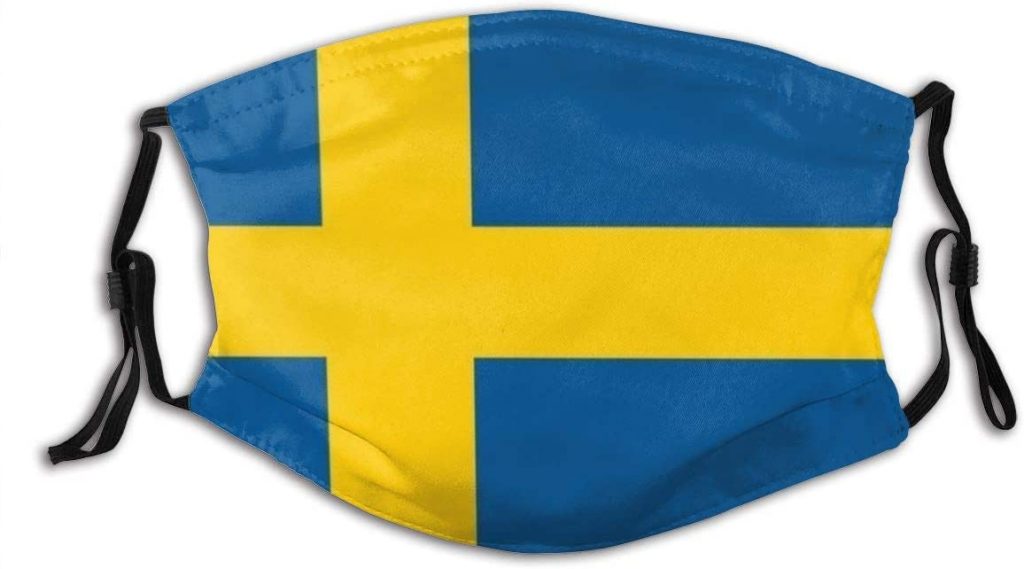
We’ve created a one-stop shop down here for people who want to obtain a “Mask Exempt” lanyard/card – because wearing a mask causes them “severe distress”, for instance. You can print out and laminate a fairly standard one for free here and the Government has instructions on how to download an official “Mask Exempt” notice to put on your phone here. And if you feel obliged to wear a mask but want to signal your disapproval of having to do so, you can get a “sexy world” mask with the Swedish flag on it here.
Don’t forget to sign the petition on the UK Government’s petitions website calling for an end to mandatory face masks in shops here.
A reader has started a website that contains some useful guidance about how you can claim legal exemption. Another reader has created an Android app which displays “I am exempt from wearing a face mask” on your phone. Only 99p.
If you’re a shop owner and you want to let your customers know you will not be insisting on face masks or asking them what their reasons for exemption are, you can download a friendly sign to stick in your window here.
And here’s an excellent piece about the ineffectiveness of masks by a Roger W. Koops, who has a doctorate in organic chemistry. See also the Swiss Doctor’s thorough review of the scientific evidence here and Prof Carl Heneghan and Dr Tom Jefferson’s Spectator article about the Danish mask study here.
The Great Barrington Declaration
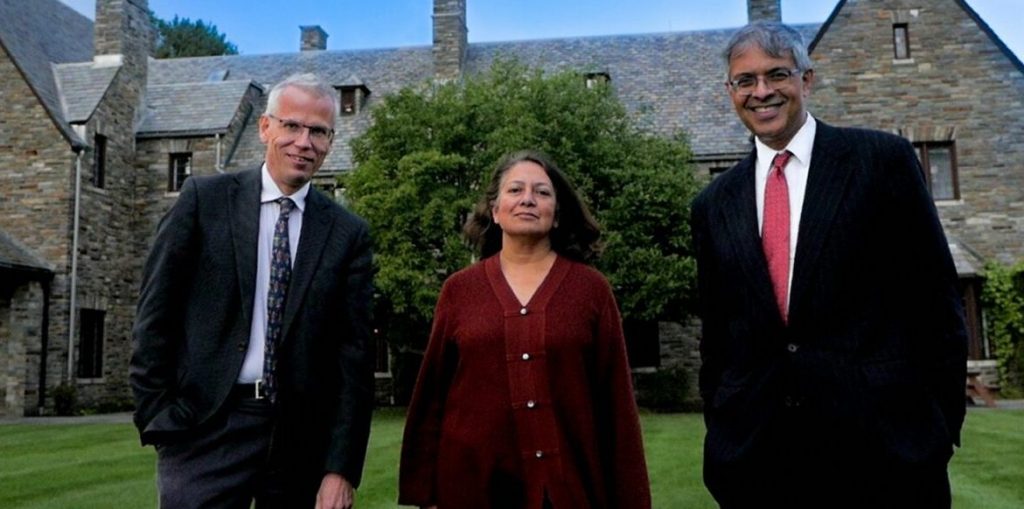
The Great Barrington Declaration, a petition started by Professor Martin Kulldorff, Professor Sunetra Gupta and Professor Jay Bhattacharya calling for a strategy of “Focused Protection” (protect the elderly and the vulnerable and let everyone else get on with life), was launched in October and the lockdown zealots have been doing their best to discredit it ever since. If you googled it a week after launch, the top hits were three smear pieces from the Guardian, including: “Herd immunity letter signed by fake experts including ‘Dr Johnny Bananas’.” (Freddie Sayers at UnHerd warned us about this the day before it appeared.) On the bright side, Google UK has stopped shadow banning it, so the actual Declaration now tops the search results – and Toby’s Spectator piece about the attempt to suppress it is among the top hits – although discussion of it has been censored by Reddit. The reason the zealots hate it, of course, is that it gives the lie to their claim that “the science” only supports their strategy. These three scientists are every bit as eminent – more eminent – than the pro-lockdown fanatics so expect no let up in the attacks. (Wikipedia has also done a smear job.)
You can find it here. Please sign it. Now over three quarters of a million signatures.
Update: The authors of the GBD have expanded the FAQs to deal with some of the arguments and smears that have been made against their proposal. Worth reading in full.
Update 2: Many of the signatories of the Great Barrington Declaration are involved with new UK anti-lockdown campaign Recovery. Find out more and join here.
Update 3: You can watch Sunetra Gupta set out the case for “Focused Protection” here and Jay Bhattacharya make it here.
Update 4: The three GBD authors plus Prof Carl Heneghan of CEBM have launched a new website collateralglobal.org, “a global repository for research into the collateral effects of the COVID-19 lockdown measures”. Follow Collateral Global on Twitter here. Sign up to the newsletter here.
Judicial Reviews Against the Government

There are now so many legal cases being brought against the Government and its ministers we thought we’d include them all in one place down here.
The Simon Dolan case has now reached the end of the road. The current lead case is the Robin Tilbrook case which challenges whether the Lockdown Regulations are constitutional. You can read about that and contribute here.
Then there’s John’s Campaign which is focused specifically on care homes. Find out more about that here.
There’s the GoodLawProject and Runnymede Trust’s Judicial Review of the Government’s award of lucrative PPE contracts to various private companies. You can find out more about that here and contribute to the crowdfunder here.
And last but not least there was the Free Speech Union‘s challenge to Ofcom over its ‘coronavirus guidance’. A High Court judge refused permission for the FSU’s judicial review on December 9th and the FSU has decided not to appeal the decision because Ofcom has conceded most of the points it was making. Check here for details.
Samaritans

If you are struggling to cope, please call Samaritans for free on 116 123 (UK and ROI), email jo@samaritans.org or visit the Samaritans website to find details of your nearest branch. Samaritans is available round the clock, every single day of the year, providing a safe place for anyone struggling to cope, whoever they are, however they feel, whatever life has done to them.
Shameless Begging Bit
Thanks as always to those of you who made a donation in the past 24 hours to pay for the upkeep of this site. Doing these daily updates is hard work (although we have help from lots of people, mainly in the form of readers sending us stories and links). If you feel like donating, please click here. And if you want to flag up any stories or links we should include in future updates, email us here. (Don’t assume we’ll pick them up in the comments.)
And Finally…

On this week’s episode of London Calling, James Delingpole and Toby puzzle over why almost no one is tuning in to the DAVOS talks happening this week, which are all freely available online. Are they shadow-banning themselves so we don’t discover their plans for the Great Reset? Or are they just really really boring?
You can listen to the podcast here and subscribe to it on iTunes here.










To join in with the discussion please make a donation to The Daily Sceptic.
Profanity and abuse will be removed and may lead to a permanent ban.